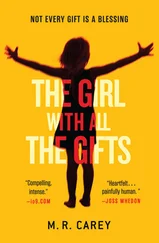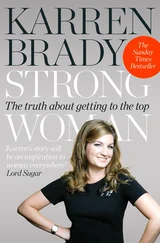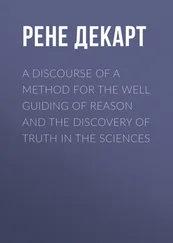The boomer brand of newspaperman, cocky and overeducated compared to his predecessors, coveted a cameo on Crossfire or a seat on McLaughlin’s stage, which conferred a new kind of instant celebrity—at least among your colleagues. Shows like these ratcheted up the pressure on reporters to separate themselves from the pack by whatever means they could. And such venues contributed mightily to a shallower conversation about politicians generally, since, increasingly as the years went on, puffed-up panelists were just as likely to speculate on the personalities of candidates—more likely, in fact—as they were on the ideas and issues that were ostensibly under discussion.
And CNN’s existence itself had only been made viable by two relatively recent and revolutionary innovations: the replacement of film with modern videotape, and the proliferation of mobile satellite dishes that could bring news to you instantly, from anywhere. Until the late 1970s, the only way a network could “go live” from the scene of breaking news was to get the telephone company to install expensive audio and video lines—a process that took weeks to complete. You could manage that for an inauguration or an Olympics or some other planned event, but if you wanted to report today’s unscheduled news from some remote location, then you needed to hand the film to some guy on a motorcycle … who would speed it to a studio … where it would be developed, synced with sound, and fed into a Telecine machine that converted film into video … and ultimately couriered or transmitted on permanent lines back to editors in New York, or maybe edited in some local studio—by which time the deadline for the evening news might well have passed.
But then came the advent of what was known in the business as “ENG”—electronic news gathering—which relied on lighter and more portable videotape cameras, freeing networks from the shackles of film. And now that videotape could be transmitted, almost miraculously, from a new generation of mobile satellites. The first satellite dishes, unwieldy and temperamental, arrived strapped to the roofs of bulky trucks (with their own onboard generators) in the early 1980s. In 1986, CNN began issuing its correspondents “flyaway dishes” that could fold up and move around the world, which were destined to become the industry standard. The 1988 campaign would be the first where the three networks and this new, twenty-four-hour cable channel would be able to easily bring you updates and interviews from any location relevant to a breaking story.
When Joe Trippi, then a young aide on the Hart campaign, arrived in the remote reaches of Troublesome Gulch to rescue Lee Hart on the first full day of the scandal, he was stunned to find a row of dishes lined up on the gravel drive like an invading army at the gate. Within a few years, this would be a familiar sight even to Americans who had nothing to do with making or covering the news, but in 1987 it seemed as if aliens had landed from Mars. “Holy shit,” Trippi remembered thinking. “They move now.”
As Trippi and his colleagues on the campaign were about to learn, videotape and satellite technology had tremendous implications not just for the transmission of news—that is, how it literally got on air, and how fast—but also for the industry’s notion of what constituted it. Before the mid-eighties, which stories got on the air, and how prominently they were featured, depended almost entirely on their objective news value—that is, on how relevant they were to the public interest. But now that calculation had a lot more to do with immediacy; suddenly a story could be captivating without being especially important. After all, how could you lead with economic data when a little girl was lost in some God-forsaken well, and your correspondent was live on the scene?
What might have been a minor story in years past could now explode into a national event, within hours, provided it had the element of human drama necessary to keep viewers planted in their seats. Even as Hart prepared to announce his campaign at Red Rock, for instance, the media had become thoroughly obsessed with two sensational stories. The first concerned Fawn Hall, who worked as a secretary for Colonel Oliver North, the star of the Iran-contra hearings, and who had smuggled documents out of the White House in her boots and the back of her skirt. (The facts of the Iran-contra scandal itself, having to do with illegal arms sales to Iran in order to secretly finance an insurgency in Nicaragua, made for less compelling TV and weren’t as widely known.) The second story had to do with the disgrace and supposed extortion of Jim Bakker, a television evangelist accused of rape and adultery, and with his wife, Tammy Faye, whose blubbering, mascara-streaked face transfixed the nation for days.
It was an omen of things to come.
You could argue that all of this hinted at something corrosive not just in American media at the time, but in the culture as a whole. In 1985, the New York University professor Neil Postman published his treatise on the television age, Amusing Ourselves to Death, which stands even now as a stunning work of social criticism. Postman’s central thesis is worth revisiting. He declared that George Orwell’s fear for humanity, as depicted in 1984, had not come to pass; obviously, Americans in 1984 did not labor under the repression of an authoritarian, mind-controlling regime, nor did anything like that seem imminent. But Postman posited that by the mid-1980s we were well on our way, instead, to realizing Aldous Huxley’s disturbing vision in Brave New World —that of a citizenry lulled into docility and self-destruction by a never-ending parade of mindless entertainment.
Expanding on the theories of the sixties philosopher Marshall McLuhan, Postman explained that the dominant media in any given society didn’t just convey news and ideas neutrally, but in fact defined the very concepts of news and ideas in its time. During what Postman called the Age of Exposition, which saw America through its birth and lasted well into the twentieth century, all of our metaphors and frames of reference had come from the printed word. When political candidates debated issues, for instance, as Abraham Lincoln and Stephen Douglas famously did in 1858, they debated in what were essentially entire paragraphs and essays, because this was the only way they knew to receive and impart information. But that era had now given way to the Age of Show Business, in which television was the undisputed king of media. (At the time of Postman’s writing, at the dawn of cable and before the Internet, some ninety million Americans were said to watch TV every night.) And in a television-dominated society, Postman theorized, news and politics had to be entertaining in order for anyone to really pay attention.
“Entertainment is the supra-ideology of all discourse on television,” Postman wrote. The mere fact that TV news shows called themselves “shows” at all, Postman pointed out, hinted at the way they were transforming the expository culture of journalism. He went on:
No matter what is depicted or from what point of view, the overarching presumption is that it is there for our amusement and pleasure. That is why even on news shows which provide us daily with fragments of tragedy and barbarism, we are urged by the newscasters to “join them tomorrow.” What for? One would think that several minutes of murder and mayhem would suffice as material for a month of sleepless nights. We accept the newscasters’ invitation because we know that the “news” is not to be taken seriously, that it is all in fun, so to say. Everything about a news show tells us this—the good looks and amiability of the cast, their pleasant banter, the exciting music that opens and closes the show, the vivid film footage, the attractive commercials—all these and more suggest that what we have just seen is no cause for weeping. A news show, to put it plainly, is a format for entertainment, not for education, reflection or catharsis.
Читать дальше












